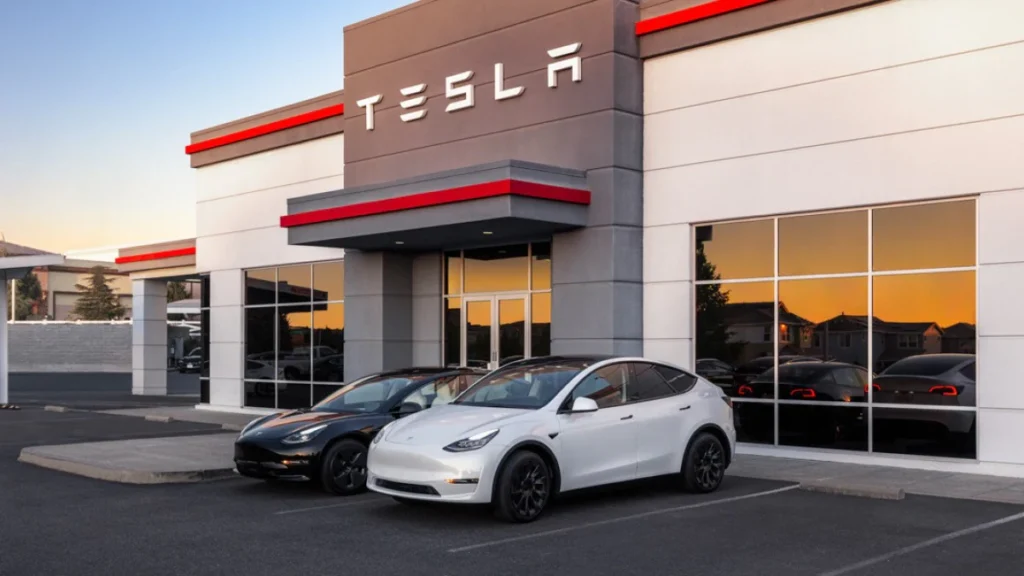Last weekend, I was cruising down the highway in my buddy’s Tesla Model 3, feeling like I was piloting a spaceship with that eerily quiet hum and instant torque. But then he dropped a bombshell: “Man, I love this car, but I’m not sure I’d buy another EV right now.
Too pricey, and where do I even charge it?” That got me thinking—why are folks cooling on electric vehicles? According to a 2025 AAA report, only 19% of folks are “likely” or “very likely” to buy an EV as their next ride, down from a high of 59% in 2023, per Gallup.
With Tesla’s sales tanking 11% in California and profits down a jaw-dropping 71%, the EV hype train seems to have hit a speed bump. High costs, spotty charging networks, and battery repair fears are scaring buyers off like a bad blind date.
But hold up—EVs can still save you money and keep your drive green, if you play it smart. Here are seven cost-saving tricks to make EVs work for your wallet, even if the market’s feeling as cold as a February morning.
Why the EV Market’s Hitting the Brakes

Let’s break it down. The EV market’s growth has slowed to a measly 7% in 2024, compared to a zippy 30% the year before. Why? It’s not just sticker shock—though EVs can cost $10,000 more upfront than gas-guzzlers.
Rising interest rates are jacking up loan payments, and folks are sweating over battery repairs that can run $5,000-$15,000. Then there’s the charging headache: outside city limits, finding a charger can feel like hunting for a gas station in the middle of the Sahara.
Add in “range anxiety” and a preference for big ol’ trucks (which EVs are still figuring out), and it’s no wonder 63% of AAA’s surveyed drivers are giving EVs a hard pass.
But don’t ditch the dream of zipping past gas stations just yet—these seven hacks will keep your bank account happy and your eco-cred intact.
1. Scoop Up a Used EV for a Steal
Buying a used EV is like snagging a designer jacket at a thrift store—same vibe, way less cash. A 2022 Nissan Leaf or Chevy Bolt can go for $15,000-$20,000, compared to $40,000 for a new one. Depreciation hits EVs hard, which is great for bargain hunters.
I once test-drove a used Tesla Model S that felt like a supercar but cost less than a loaded Honda Civic. Certified pre-owned programs from brands like Tesla or Nissan sweeten the deal with warranties, so you’re not sweating a battery replacement.
Check the battery health—most used EVs still have 70-80% capacity, plenty for your daily 30-mile commute. Just make sure to get a vehicle history report to avoid any lemons. You could save up to $20,000 upfront, and that’s not chump change.
2. Go Hybrid to Split the Difference
If EVs feel like too big a leap, hybrids are your Goldilocks option—not too pricey, not too gas-dependent. A Toyota Prius or Honda Accord Hybrid starts around $25,000, compared to $40,000 for a base-model EV like the Hyundai Ioniq 5.
Hybrids sip fuel like a hipster sips oat milk lattes, saving you $1,000 a year on gas, per EPA estimates. Plus, you don’t need to stress about finding a charger—they run on gas when the battery’s low.
My cousin swears by his Prius; he says it’s like driving a normal car but with a smug “I’m saving the planet” vibe. Maintenance is cheaper too—no oil changes as often as a full gas car. It’s a wallet-friendly way to dip your toes into electric without diving in headfirst.
3. Hunt Down Government Rebates Like a Treasure Map
Nothing says “cha-ching” like free money from Uncle Sam. The federal EV tax credit can knock up to $7,500 off your purchase, and states like California throw in rebates as high as $2,000. Even used EVs qualify for a $4,000 federal credit in some cases.
Check energy.gov for the latest rules, since income caps and vehicle types apply. When I helped a friend buy her Kia EV6, she scored a $7,500 credit that made her monthly payments feel like pocket change.
Research local programs too—some cities offer free charging or HOV lane perks. Just don’t sleep on the paperwork; missing a deadline could cost you thousands. It’s like finding a coupon for your dream car—why wouldn’t you use it?
4. Lease an EV to Dodge Long-Term Risks
Leasing an EV is like dating without the commitment—you get the fun without the baggage. Monthly payments are often $200-$300 lower than buying, and you’re not stuck worrying about battery degradation or resale value.
A three-year lease on a Nissan Leaf might run $350 a month, versus $600 for a loan. When I leased a Chevy Bolt for a summer, it was a blast—zippy, quiet, and no gas station stops. At the end, I just handed it back and walked away, no fuss.
With the EV market wobbling, leasing lets you test the waters without betting your life savings. Just watch out for mileage limits, or you’ll pay extra for that cross-country road trip.
5. Pick EVs with Cheap Maintenance Plans
EVs are like low-maintenance pets—no oil changes, fewer moving parts, and less hassle. Brands like Hyundai and Kia offer free maintenance for the first few years, and their 10-year battery warranties are like a warm hug for your wallet.
Compare that to a gas car’s $500 annual tune-ups. My neighbor’s Kia EV6 hasn’t seen a mechanic in two years, and he’s saved enough to fund his craft beer obsession. Battery repairs are a concern-$5,000-$15,000 if they go kaput-but picking a model with a long warranty minimizes the risk.
Do your homework on Consumer Reports to find EVs with bulletproof reliability. Saving $1,000 a year on maintenance? That’s a vacation fund right there.
6. Install a Home Charger to Slash Fuel Costs
Charging at home is like brewing your own coffee—cheaper and way more convenient than hitting up a public station. A Level 2 charger costs $500-$2,000 to install but saves you $500 a year over public charging, where rates can hit $0.50 per kWh.
Electricity at home might run $0.15 per kWh, especially if you charge during off-peak hours. I know a guy who installed a charger in his garage and brags about “fueling” his EV for less than his Netflix bill.
Some states offer rebates up to $1,000 for charger installation, so check your local utility’s website. It’s an upfront hit, but it’s like planting a money tree in your driveway.
7. Try Car-Sharing for City Life
If you’re an urbanite who drives less than 5,000 miles a year, why buy at all? EV car-sharing services like Zipcar or subscription plans let you roll in a Tesla or Leaf for $10-$20 an hour, no maintenance or insurance headaches.
I tried Zipcar in Chicago last summer-grabbed a Bolt, cruised to a BBQ, and didn’t worry about parking or gas. It’s perfect if you just need wheels for errands or a weekend getaway.
These services dodge the $40,000 EV price tag and let you test-drive the EV lifestyle without committing. Plus, you can flex on your friends with a new ride every week. Who needs ownership when you’ve got options?
Wrapping It Up

So, there you have it—seven ways to save serious cash on EVs, even as purchase interest limps along at 19%. From snagging a used Tesla for peanuts to leasing or jumping into a hybrid, you can keep your wallet happy and still cut your carbon footprint.
The EV market’s in a funk, sure, but that just means better deals for savvy buyers like you. My advice? Hit up a dealership, test-drive a used EV or hybrid, and check those rebates before you sign anything.
As my old man used to say, “A car’s only as good as the deal you get on it.” So go out there, save some green, and maybe enjoy a few extra bucks for a road trip playlist upgrade. What’s your next move—buy, lease, or share? Let me know in the comments.
